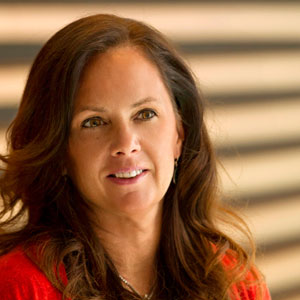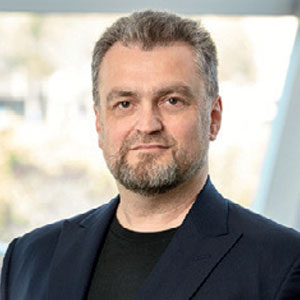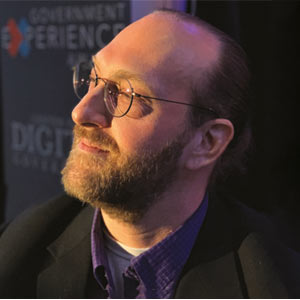THANK YOU FOR SUBSCRIBING
Editor's Pick (1 - 4 of 8)

Jane Alexander, CIO, Cleveland Museum of Art
ArtLens Studio is designed with the entire family in mind to give visitors the opportunity to use movement and play to connect with the collection. The space features Reveal and Zoom, a 4k interactive video wall that uses motion sense technology. In Reveal, visitors use their bodies to bring a blurry artwork into focus, while in Zoom, visitors use their body to zoom in on details of an artwork. ArtLens Studio also includes an area where visitors can create their own works of art. Pottery Wheel’s motion sensing technology allows visitors to mold, shape, and design a piece of pottery without any of the mess.
The ArtLens Wall is a 40-foot interactive, multitouch, MicroTile Wall that displays in real time all works of art from the permanent collection currently on view in the galleries. The wall allows visitors to look at the CMA’s collection from a far and gives them the opportunity to dive deeper by exploring key themes. ArtLens Wall connects with the ArtLens App via Bluetooth and allows visitors to favorite artworks and create their own tours right on the app.
The ArtLens App includes an interactive map that allows visitors to find their location in the museum simply by pressing the Find Me button. In addition, the app includes a high-definition image and object information about every artwork on display in the museum and is updated in real time. The Scan feature on the app uses image-recognition software to give visitors additional content on select two-dimensional artworks.
Again, an important goal of the ARTLENS Gallery was to remove both perceived and physical barriers to the art. It was imperative that we keep the art in the forefront while opening avenues through which our visitors would feel comfortable and empowered to experience the art. Indeed, technology can engender its own type of intimidation and create a different type of barrier. Thus our use of technology had to be thoughtful and purposeful. Keeping these issues in mind, we removed touch screens in the space and instead used projections that recognize facial features and body movements. Visitors see an artwork on display, and its projection draws them to look at the piece in a different way. This effortless use of technology created a comfort level that is designed to seamlessly carry over into the visitor’s experience of the art.
Additionally, it was important to us when designing the gallery that the final product was sustainable and scalable. During the design and implementation, we ensured content could be easily refreshed and updated to allow for the addition of new games and artworks as needed. We also made sure our backend system was able to pull all the information from out collection database systems. In addition, including our audio-visual (AV) Integrator in the discussion from the beginning allowed us to make sure there were no surprises or mishaps when we opened because everything was working as anticipated.
For other C-suite executives, my words of advice would be to develop a cross-collaborative team that enables each member to demonstrate their different skills and expertise. I would recommend asking these people to think big first, so they do not limit themselves to certain technologies. The collaboration between project management and product management is also important in implementing such a complex project. We established a clear system for documenting and reporting issues so they could be addressed quickly and efficiently. The constant communication between the product and project managers ensures the project remains an iterative process—always changing and improving for the better.
I would also recommend identifying a specific goal for your target audience. In our case, it was finding a way to engage the non-traditional visitor without alienating our regular visitors. Maintaining this balance was quintessential to our project’s success.
In summary, when developing digital projects it is most important that the work is done collaboratively. Having siloes leads to a disjointed workflow and thwarts the possibility for big innovation. Team members should be empowered to exercise their strengths and the approach should be more give and take than hierarchical. Whenever possible, the project should be forward looking, and participants must be willing to be experimental and not afraid of risk. The goal of the final project should be something that is open and engaging rather than inaccessible. Finally, the medium should be digital – not analog—and the outlook global rather than local. All of these elements will lead to a successful final product.
Technology is at its most sublime when the user forgets it is there
Weekly Brief
I agree We use cookies on this website to enhance your user experience. By clicking any link on this page you are giving your consent for us to set cookies. More info
Read Also
Artificial Intelligence - Myths And Truths
Geraldo Pereira Junior, Chief Information Officer, Ypê
Sustainable Future through Innovative Technology Solutions
Faisal Parvez, Director, BT Business CIO
The Future Relies on Augmented AI
Laurent Fresnel, CIO, The Star Entertainment Group
Digitalization with the use of digital technologies/Improving business through digital technologies
Wilbertus Darmadi, CIO, Toyota Astra Motor
How Marco's Pizza Leaned On Technology To Succeed Amid The Pandemic By Quickly Pivoting To Contact-Free Delivery And Curbside Carryout
Rick Stanbridge, VP & Chief Information Officer, Marco’s Pizza
Bunnings Diy Digital Transformation
Leah Balter, Chief Information Officer, Bunnings
For a Smarter City: Trust the Data, Ignore the Hype
Brad Dunkle, Deputy CIO, City of Charlotte
Smart Community Innovation for the Post Pandemic
Harry Meier, Deputy Cio for Innovation, Department of Innovation and Technology, City of Mesa






















